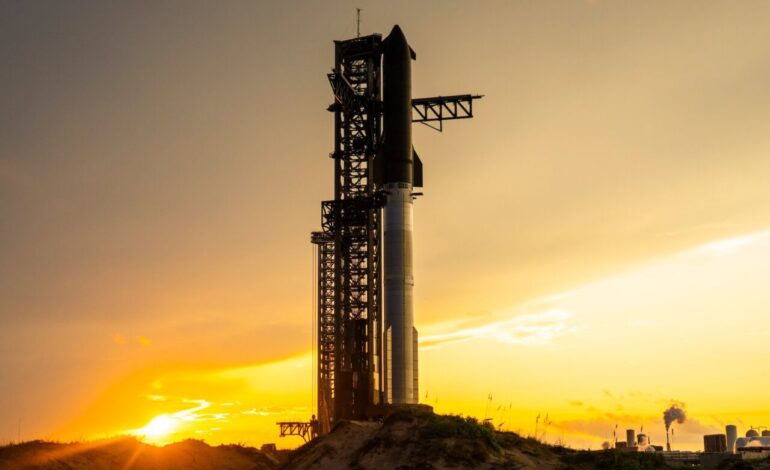SpaceX Prepares for Starship’s Final Flight of 2025 on October 13

SpaceX is gearing up for the final flight of its Starship in 2025, scheduled for no earlier than October 13. This launch follows a tumultuous schedule marked by earlier failures but includes a successful test flight in August. This upcoming mission will be the fifth full-scale test of the Starship Version 2, serving as a precursor to the larger, upgraded Version 3 set to debut in early 2026. The outcome of this flight is crucial, as it will influence the timeline for the next generation of the spacecraft.
As with the previous flights, the plan for this mission is largely familiar. However, there are notable adjustments aimed at enhancing overall performance. During the return phase, SpaceX will implement a new “dynamic banking maneuver.” This maneuver is intended to test subsonic guidance algorithms before the vehicle enters a landing burn and splashes down in the Indian Ocean. The Super Heavy Booster will once again splash down in the Gulf of Mexico, while the upper stage, known as “Ship,” will follow a suborbital trajectory.
In this flight, SpaceX will reignite one of Ship’s Raptor engines prior to reentry and will also test the rocket’s satellite deployer. These innovations are aimed at improving reliability and performance, building on the success of flight 10.
New Landing Techniques and Tested Engines
This mission features a Super Heavy booster designated B15, which previously flew on flight 8 and was successfully recovered using Mechazilla’s “chopstick” arms. For this launch, 24 of the 33 Raptor engines on the booster are classified as “flight-proven,” enhancing confidence in their performance. SpaceX has introduced a new landing sequence that includes igniting 13 engines initially, transitioning to five engines during a divert phase, and finally downshifting to three engines for the final landing burn. This new configuration aims to provide additional redundancy in case of spontaneous engine shutdowns.
Heat Shield Developments and Future Implications
In an interesting shift from the previous flight, SpaceX has opted to remove certain ceramic thermal protection tiles from Starship for this test. These tiles are located in areas that lack a backup ablative layer. Bill Gerstenmaier, a SpaceX executive responsible for build and flight reliability, noted that this testing approach is designed to assess the vehicle’s durability in critical areas. Unlike flight 10, there are currently no experimental metallic tiles being added to the heat shield.
Gerstenmaier explained that while metallic tiles could simplify manufacturing and offer greater durability than ceramic tiles, they did not perform well in heat control during prior tests. Observations from previous flights indicated discoloration due to oxidation on the vehicle’s surface, emphasizing the need for effective heat shield solutions. Perfecting the heat shield is essential for SpaceX’s objective of achieving rapid reusability, as any damage would necessitate significant refurbishment.
As preparations for Starship’s final flight of 2025 continue, all eyes will be on SpaceX to see how these new tests and modifications will play out. The mission promises to deliver critical data that will shape the future of space travel. Updates on the launch and subsequent results will be available as they unfold.






